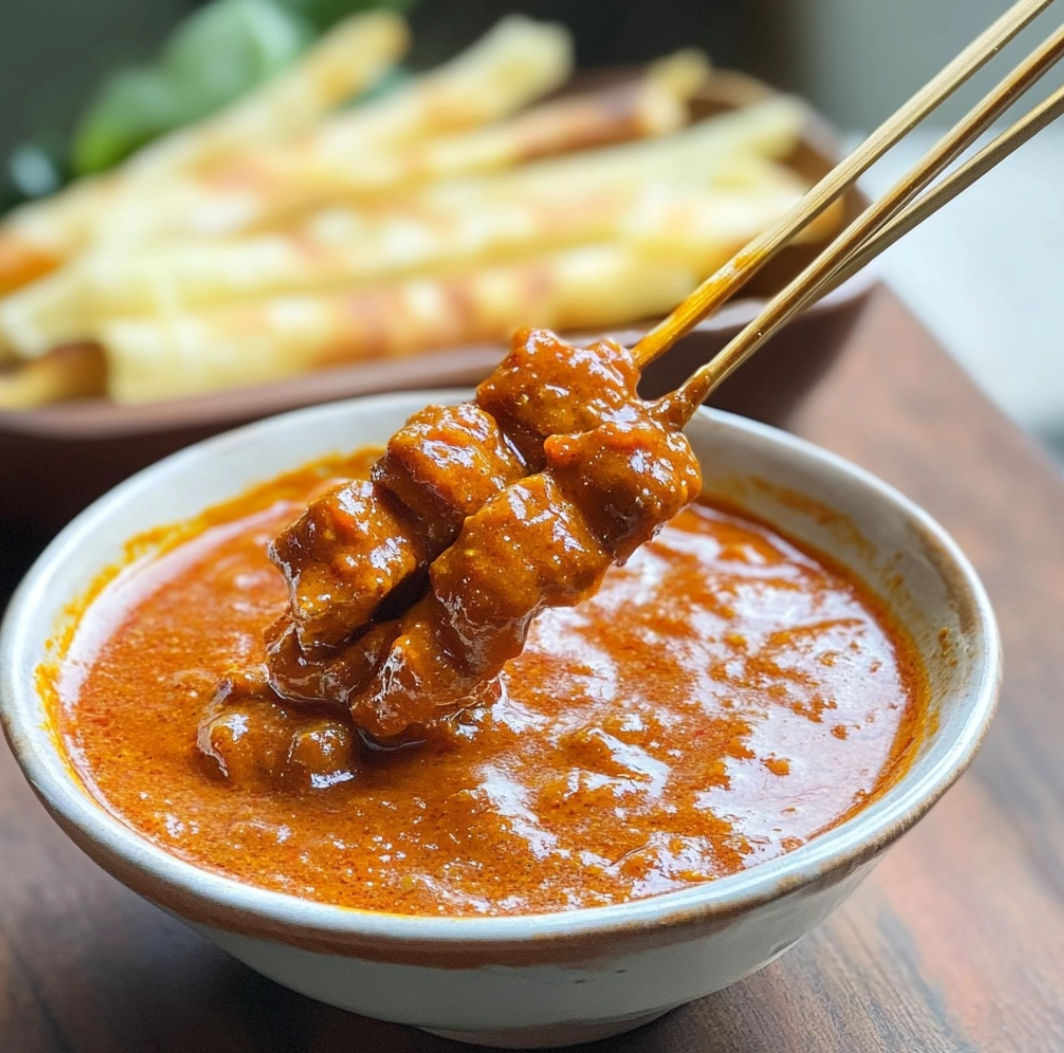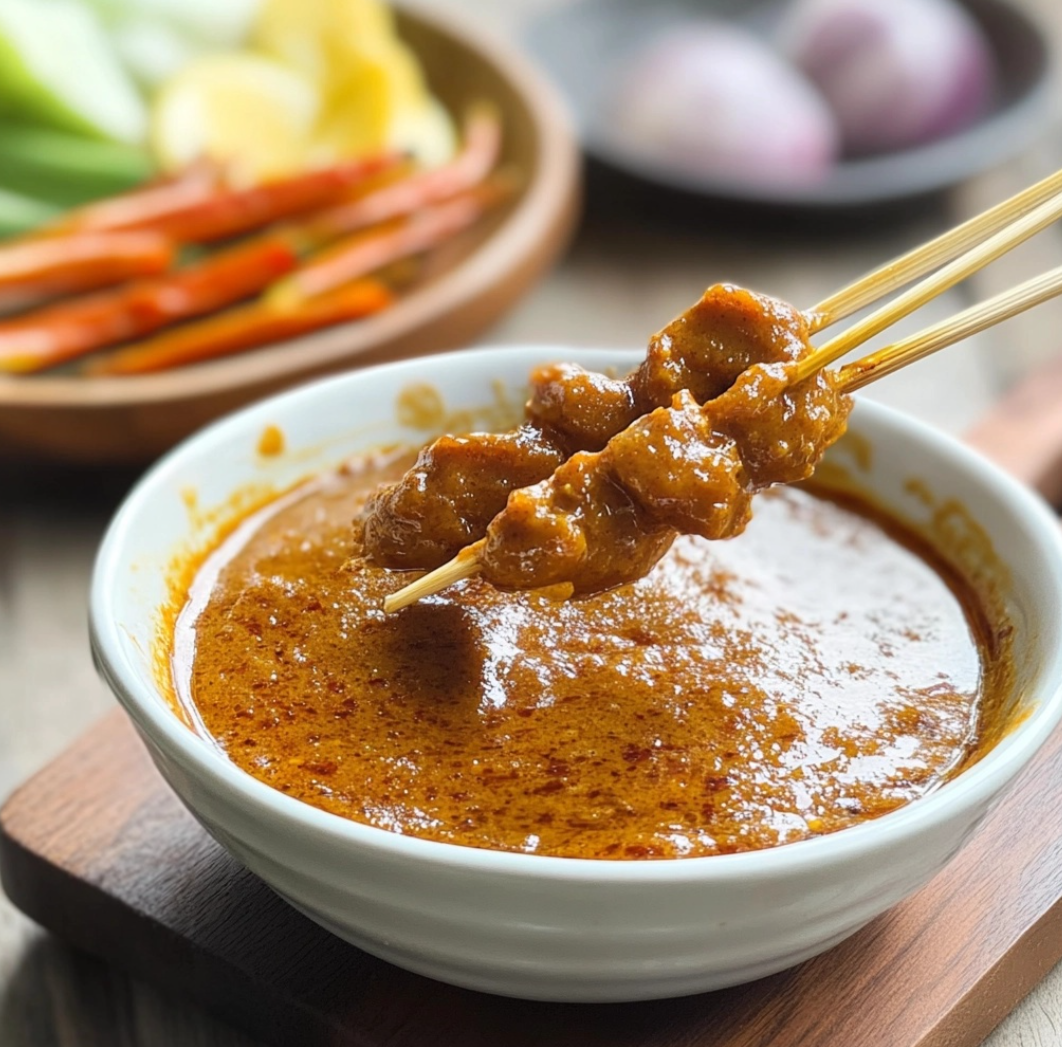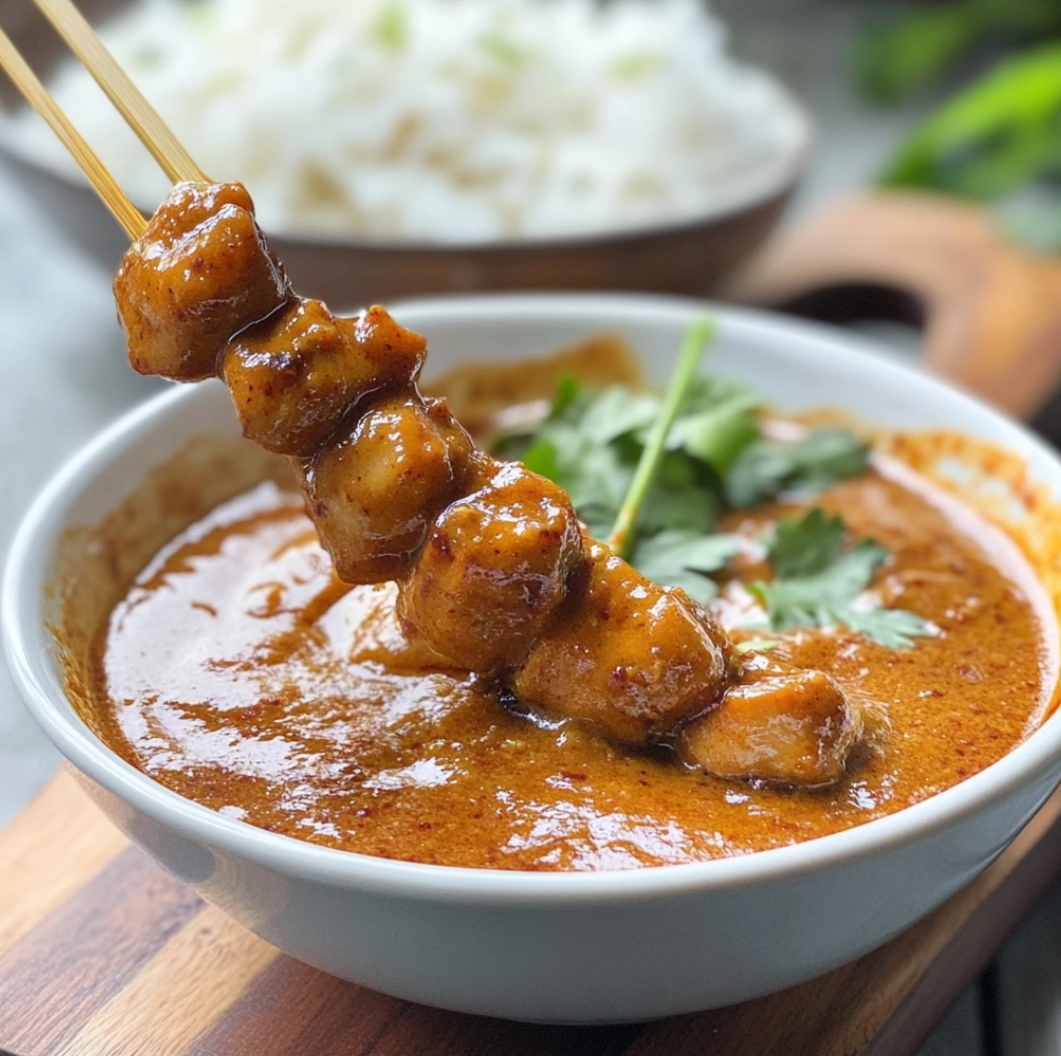Introduction
When it comes to summer dining, nothing beats a fresh, vibrant dish that embodies the flavors of the season. This easy satay sauce is a creamy, tangy delight that pairs beautifully with a variety of dishes, making it the perfect companion for your summer meals. Whether you’re grilling skewers, enjoying fresh summer rolls, or drizzling it over tofu and rice noodles, this versatile sauce will elevate your culinary experience. Let’s dive into the recipe, explore advanced techniques, maintenance tips, dietary adaptations, and address some frequently asked questions.

Ingredients for Easy Satay Sauce
To make your satay sauce, you’ll need the following ingredients:
- 1/2 cup peanut butter
- 1/2 cup coconut milk
- 2 tbsp soy sauce
- 1 tbsp lime juice
- 1 tbsp brown sugar
- 1 clove garlic, minced
- 1/2 tsp ginger, grated
- 1/4 tsp red pepper flakes (optional)
Basic Recipe: Making the Satay Sauce
Creating your satay sauce is a simple process that can be done in just a few minutes. Follow these steps for a delicious result:
- Mixing the Base: Start by grabbing a mixing bowl and combine the creamy peanut butter with the luscious coconut milk. Use a whisk or a fork to achieve a smooth consistency, ensuring there are no lumps.
- Adding Flavor: Next, add in the soy sauce for that umami punch, zesty lime juice for a refreshing tang, and sweet brown sugar to balance the flavors. Incorporate the minced garlic and freshly grated ginger for added depth. If you enjoy a bit of heat, sprinkle in the red pepper flakes.
- Whisking It All Together: Whisk all the ingredients together until fully incorporated. The goal is to create a rich, creamy sauce that’s both flavorful and inviting.
- Adjusting Consistency: If the sauce is thicker than you prefer, feel free to adjust by adding a splash of water until you reach your desired consistency.
- Serving Suggestions: This satay sauce is perfect for dipping skewers, pairing with summer rolls, drizzling over tofu, or mixing into rice noodles. Enjoy every bite!
Advanced Techniques for Perfecting Your Satay Sauce
For those looking to take their satay sauce to the next level, consider the following advanced techniques:
Enhancing Flavor Depth
- Toast the Peanut Butter: Before mixing, you can toast the peanut butter in a pan over medium heat for a few minutes. This brings out its natural oils and enhances the nutty flavor.
- Use Fresh Ingredients: Opt for fresh garlic and ginger rather than powdered versions. Fresh ingredients provide a more vibrant taste.
Experimenting with Spices
- Add More Heat: If you love spice, experiment with different types of chili or hot sauces. Thai chili paste (Nam Prik Pao) can add a lovely smokiness and depth.
- Incorporate Herbs: Fresh herbs such as cilantro or mint can brighten the sauce and add a refreshing touch.
Flavor Infusion
- Infuse Coconut Milk: For a unique twist, infuse the coconut milk with additional flavors like lemongrass or kaffir lime leaves. Heat the coconut milk gently with the herbs, then strain before mixing with the other ingredients.

Maintenance Tips for Your Satay Sauce
To keep your satay sauce fresh and delicious, follow these maintenance tips:
Storage Guidelines
- Refrigeration: Store any leftover satay sauce in an airtight container in the refrigerator. It will stay fresh for up to one week.
- Freezing Options: If you have a large batch, consider freezing the sauce. Pour it into an ice cube tray for easy portioning, and store in a freezer-safe bag. It will last for up to three months.
Reheating Instructions
- Gentle Heating: When you’re ready to use the sauce again, gently reheat it in a saucepan over low heat. If it has thickened, add a splash of water or coconut milk to achieve the desired consistency.
- Avoid Microwaving: While microwaving may be convenient, it can cause the sauce to separate. Opt for stovetop heating instead.
Dietary Adaptations for Satay Sauce
This easy satay sauce can be easily adapted to fit various dietary needs:
Gluten-Free Version
- Soy Sauce Alternatives: Use gluten-free soy sauce or tamari to make the recipe gluten-free. This substitution will keep the flavor intact without compromising dietary restrictions.
Nut-Free Option
- Sunflower Seed Butter: For those with nut allergies, sunflower seed butter is an excellent alternative to peanut butter. It provides a similar creamy texture and flavor profile.
Vegan Adaptation
- Ensure All Ingredients Are Vegan: The original recipe is naturally vegan, but always check labels to ensure that soy sauce and other ingredients are vegan-friendly.

Frequently Asked Questions About Satay Sauce
What is satay sauce typically served with?
Satay sauce is traditionally served with grilled meats, but it is also delicious with vegetables, tofu, and seafood. It’s perfect for dipping or drizzling over a variety of dishes.
Can I use different types of nut butters?
Yes! While peanut butter is the classic choice, you can experiment with almond or cashew butter for a different flavor profile. Just keep in mind that the taste and texture may vary.
How can I make the sauce spicier?
To increase the spice level, you can add more red pepper flakes, sriracha, or even a dash of chili oil. Adjust to your heat preference.
Is it possible to make the sauce ahead of time?
Absolutely! In fact, making it ahead of time allows the flavors to meld together beautifully. Store it in the fridge for up to a week or freeze it for longer storage.
What dishes can I pair with satay sauce?
You can pair satay sauce with grilled chicken, shrimp skewers, vegetable stir-fries, rice noodles, or even as a salad dressing. Its versatility makes it a fantastic addition to many meals.
Conclusion
This easy satay sauce is a delightful addition to your summer meals, bringing together creamy, tangy flavors that complement a variety of dishes. Whether you’re preparing a casual barbecue or a refined dinner party, this sauce will impress your guests and elevate your culinary creations. With simple ingredients and easy-to-follow instructions, you can enjoy a taste of Southeast Asia in the comfort of your home. Try it today, and enjoy every delicious bite!

